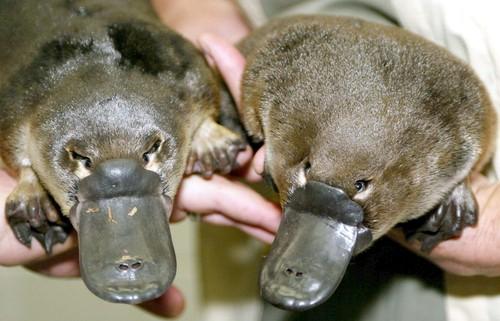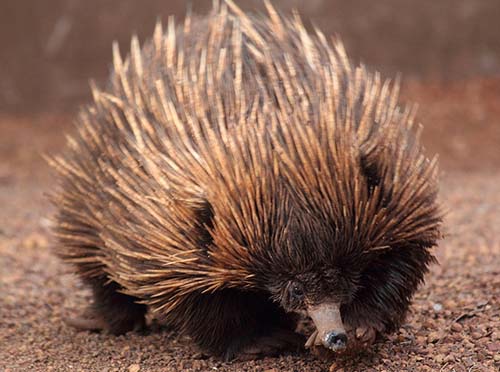Mammals - Characteristics and Taxonomy

Mammal Classification
Kingdom Animalia
---Phylum Chordata
------Subphylum Vertebrata
---------Class Mammalia
Characteristics of Mammals
-
Mammary Glands: All mammals possess mammary glands, which produce milk to nourish their young. This distinguishes them from other animals.
-
Hair or Fur: Mammals have hair or fur covering at least some parts of their bodies at some point in their life cycle. This hair serves various purposes, including insulation, protection, and sensory functions.
-
Warm-Blooded (Endothermic): Mammals regulate their body temperature internally, maintaining a relatively constant temperature regardless of the external environment. This trait helps them adapt to various climates.
-
Live Birth: Most mammals give birth to live offspring. The young develop within the mother's body and are nourished through the placenta or milk after birth.
Monotremes are a group of mammals that lay egg. Marsupials raise young in a pouch. -
Diaphragm: Mammals have a diaphragm, a muscular structure separating the chest from the abdominal cavity. This is essential for breathing and helps in the inhalation and exhalation of air.
-
Specialized Teeth: Mammals have different types of teeth (incisors, canines, premolars, molars) that are adapted to their specific diets, allowing them to chew and process food efficiently.
-
Large Brain Relative to Body Size: Compared to other vertebrates, mammals generally have larger brains relative to their body size. This often correlates with complex behaviors and cognitive abilities.
-
Three Middle Ear Bones: Mammals have three middle ear bones (hammer, anvil, and stirrup) that transmit sound vibrations from the eardrum to the inner ear. This arrangement contributes to their acute hearing abilities.
-
Complex Social Behavior: Many mammals exhibit complex social structures and behaviors, including parental care, communication through vocalizations, and hierarchical societies.
Specialized Teeth
Incisors - biting
Canines - stabbing, holding
molars - crushing, grinding
Different types of mammals have different types of teeth - depending on their diet
Predators have large canines
Herbivores have large flat molars
Mammals have a four chambered heart and a double loop circulatory system
Mammary Glands - used to nurse young, produce milk
Types of Mammals
Monotremes (egg layers), Marsupials (pouch), Placentals (uterus)
Order Monotremata
Egg laying mammals found only
in Australia
Have reptilian characteristics (cloaca & egg laying)
Have mammalian features (hair, mammary gland)
Examples:

Duck-billed platypus lives in Australia, lays eggs and males have a venom gland
The spiny anteater, also known as the echidna
Order Marsupiala
Mammals bear their young in
am immature state, babies develop in a pouch
Majority are found on Australia, opossums are found on other continents
Examples: Kangaroo, wallaby, tasmanian devil, koala (click to see pictures)

Placental Mammals
Alternative: Print out Mammal Orders Chart, fill in information from the presentation
Placental Mammals have a gestation period (length of time in uterus)
Placenta- membrane that allows nutrients to pass thru from mom to baby
Domesticated animals have been kept and bred by people - cows, dogs, pigs, horses..etc
Placental Mammal Orders
Rodentia - teeth specialized for gnawing, incisors grow continuously. Ex. Mouse, rat, beaver
Chiroptera- flying mammals (membrane wing), use echolocation. Ex. bats
Insectivora - mainly eat insects, long noses. Ex. shrew & mole
Carnivora - flesh eating hunters, large canines. Ex. dog, cat, fox, lion, bear, raccoon
( Pinnipedia - marine mammals that mate on land. Ex. Walrus, seal)
Primate - adapted for living in trees, intelligent, opposable thumbs. Ex. Chimpanzees, humans
Artiodactyla - type of ungulate (hoofed mammal), even toed, Ex, sheep, cow. Large rumen in stomach helps break down plant material.
Perissodactyla - type of ungulate, odd toed. Ex. horse, rhino. Plant material is digested in a cecum
Cetacea - marine mammals, use echolocation, have blowhole. Ex. whales & dolphins
Lagomorpha - one pair of long incisors, legs specialized for hopping. Ex. rabbits and hares
Sirenia - marine mammals that live in shallow water. Ex. Manatee & dugong
Proboscidea - named for their trunk, or proboscis, many have long tusks (incisor). Ex. elephants.
Xenarthran - Sloths, anteaters

